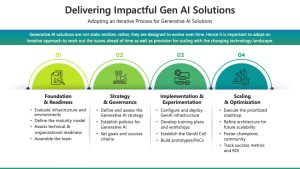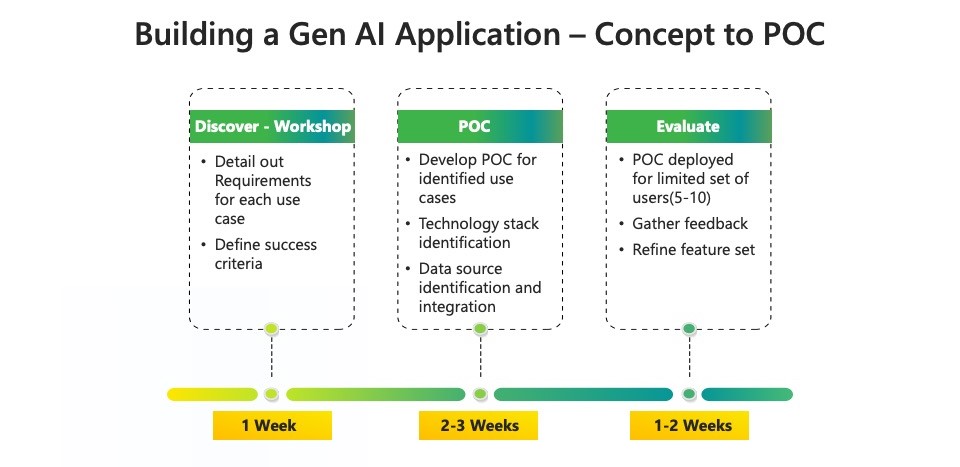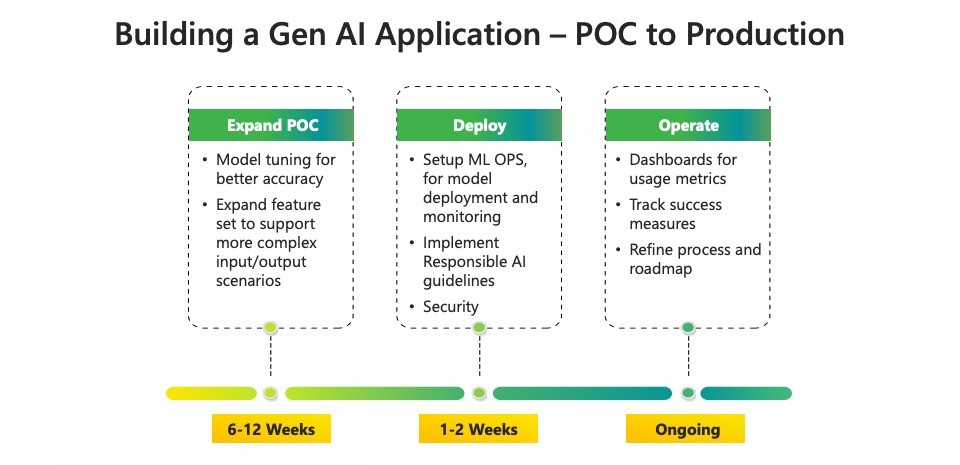Engagement Approach
At Happiest Minds Generative AI Business Services, we follow a structured approach to building GenAI solutions, ensuring a balance between experimentation, validation, and scalability.
Our approach to customer engagement on GenAI use cases involved several stages: focusing on understanding the customer’s needs, designing solutions, and delivering them in a way that maximizes value. Here is our customer engagement approach.
Objective: Understand the customer’s requirements, business objectives, and pain points.
Customer Workshops: Hold workshops with key stakeholders to explore their goals and pain points and how GenAI could address these. Understand the data available, existing infrastructure, and desired outcomes.
Use Case Identification: Identify potential GenAI use cases (e.g., risk assessment, document analysis, customer support, etc.) that can deliver value to the business.
Requirements Gathering: Define specific functional and non-functional requirements (e.g., performance, data security, scalability).
AI Model Selection: Choose appropriate pre-trained or custom-trained models based on customer aspirations and requirements.
Delivery Approach
Building a GenAI Application– Concept to POC
Developing GenAI solutions starts with a Discovery Workshop to define requirements and success criteria. It then progresses to building a Proof of Concept (PoC) for selected use cases, identifying the technology stack, and integrating data sources. Finally, the PoC is deployed to a limited user group for evaluation, feedback collection, and feature refinement. This iterative process ensures that the solution is aligned with business needs and delivers measurable value.
Building a Gen AI Application – POC to Production
Building a Generative AI application from Proof-of-Concept (PoC) to production requires a structured and iterative approach. The below process chart outlines key phases of the development lifecycle, ensuring a smooth transition from experimentation to deployment and continuous operation.
The process begins with expanding the PoC by refining model accuracy and enhancing features to support more complex input and output scenarios. In the deployment phase, robust MLOps practices, security measures, and Responsible AI guidelines are established to ensure compliance and ethical AI usage. Once in operation, dashboards track key usage metrics, success measures are monitored, and ongoing refinements are made to optimize performance and scalability.
By following this framework, organizations can systematically build, deploy, and scale GenAI applications while ensuring reliability, transparency, and long-term success.






